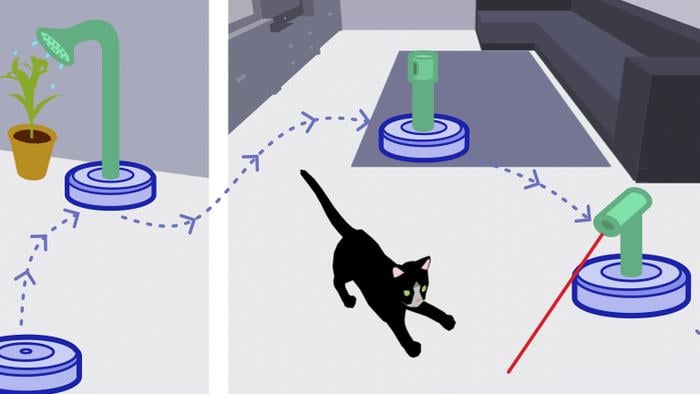Your robot vacuum cleaner spends most of its life gathering dust rather than cleaning it. Now researchers have found a way to make these idle devices earn their keep by transforming them into versatile household assistants.
Computer scientists from the University of Bath have identified over 100 ways to repurpose domestic robots during their downtime, demonstrating four practical applications that could immediately enhance our daily lives. Their findings were presented this week at the CHI Conference on Human Factors in Computing Systems.
“Mobile domestic robots, like robot vacuum cleaners and lawnmowers, are perceived as limited, single-task devices but there is a strong argument that they are under-used for practical tasks. For most of the day, they sit idle,” said Yoshiaki Shiokawa, the study’s lead author and PhD student at Bath’s Department of Computer Science.
The research team discovered that robot vacuum cleaners typically clean for less than two hours daily, leaving substantial idle time that could be harnessed for additional tasks. Through interviews with 12 experts in human-computer and human-robot interaction, they developed a comprehensive framework for expanding these devices’ capabilities.
To demonstrate their concept, the researchers reprogrammed a standard Roomba-type device to perform four new functions: serving as a mobile wireless phone charger, projecting workout videos onto walls and ceilings, remotely monitoring home safety, and displaying “do not disturb” messages during work calls.
“We should be extending their utility beyond their primary tasks by programming them to physically navigate the home to perform a range of additional functions,” Shiokawa explained. “Just think how much more efficiently households would run if Roombas could be converted into household assistants.”
The team’s proposed applications range from practical to playful. With minimal modifications, domestic robots could water plants, remind users to take medication, entertain pets, or even help elderly users stand from a sitting position.
Unlike stationary smart home devices, mobile robots can physically navigate different spaces, making them uniquely suited to tasks that require movement. By attaching different tools—like projectors, screens, or robotic arms—a single device could fulfill multiple roles throughout the day.
Dr. Adwait Sharma, co-author and supervisor of the study, emphasized the untapped potential: “Idle time presents unique opportunities for value-adding interactions and it aligns with the growing need for adaptable robots and integrated systems that can seamlessly fit into our daily lives.”
With the domestic robot market expected to grow nearly 19% annually by 2028, this research points toward a future where our household helpers do much more than one-off cleaning tasks. Instead of resenting your Roomba for lounging around all day, you might soon find yourself wondering how you ever managed without your multitasking mechanical assistant.
If our reporting has informed or inspired you, please consider making a donation. Every contribution, no matter the size, empowers us to continue delivering accurate, engaging, and trustworthy science and medical news. Independent journalism requires time, effort, and resources—your support ensures we can keep uncovering the stories that matter most to you.
Join us in making knowledge accessible and impactful. Thank you for standing with us!

